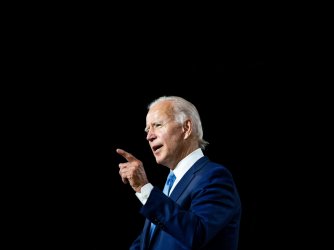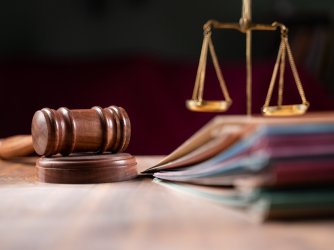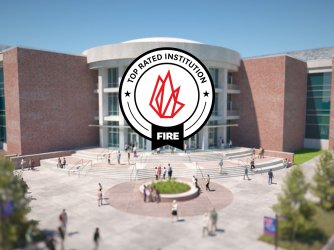Table of Contents
A Roundup of 2011’s Free Speech Case Law
While FIRE has won numerous victories this year in working to protect individual rights on college campuses, 2011 was a mixed year for the defense of students' rights by the courts. Importantly, this year highlighted divergent theories of the First Amendment rights of students off campus. While some courts have held that schools are limited by the First Amendment in what they can regulate off campus, other courts this year held that things students say off campus can have almost unlimited disciplinary consequences on campus. This is a troubling trend, outlined in several cases below.
In June, the United States District Court for the District of Colorado held in Mink v. Knox, 2011 U.S. Dist. LEXIS 59380 (D. Colo. 2011) that a prosecutor who authorized an illegal search of the home of a student was not entitled to qualified immunity and was thus personally liable under 42 U.S.C. § 1983 for her unconstitutional actions. We have blogged about the implications of this case here on The Torch, but let's quickly revisit the facts of the case: A student posted a satirical photo of a professor online, never expecting to have his home searched, to have his computer seized, or to spend a week in jail. All of this happened, however, as a result of one overzealous prosecutor. Thankfully, when a government official violates a "clearly established" constitutional right, under § 1983 that official no longer enjoys the protection of Eleventh Amendment immunity, and may be sued in his or her personal capacity and found liable for monetary damages. In this case, the prosecutor should have known better than to violate clearly established First Amendment rights: The United States Court of Appeals for the Tenth Circuit held in Mink v. Knox that it is "clearly established in this circuit that speech, such as parody and rhetorical hyperbole, which cannot reasonably be taken as stating actual fact, enjoys the full protection of the First Amendment and therefore cannot constitute the crime of criminal libel for purposes of a probable cause determination." This rights violation ended up costing the prosecutor a cool $425,000.
Also in June, twin victories for student speech were handed down by the United States Court of Appeals for the Third Circuit. In the two cases of Layshock v. Hermitage School District, 650 F.3d 205 (3d Cir. 2011) and J.S. v. Blue Mountain School District, 650 F.3d 915 (3d Cir. 2011), each of which involved students who were disciplined for creating satirical MySpace profiles mocking their school principals, the Third Circuit held that schools cannot "reach into a child's home and control his/her actions there to the same extent that it can control that child when he/she participates in school sponsored activities." The school districts have filed a joint petition for certiorari before the Supreme Court of the United States, and the Court has the opportunity here to advise lower courts as to the scope of First Amendment protections for student off-campus speech.
If the Court takes one or both of these cases, the ensuing ruling would likely impact student rights beyond the K-12 level, as lower courts too often fail to recognize the bright-line distinction between rights enjoyed by K-12 students and rights enjoyed by college students. In July, the Minnesota Court of Appeals held in Tatro v. University of Minnesota that a public university could legitimately regulate off-campus speech (in this case, Facebook posts) where such posts fail the test outlined in Tinker v. Des Moines Independent Community School District, 393 U.S. 503 (1969) by "materially and substantially disrupt[ing] the work and discipline of the university." The court's ruling not only expands the scope of Tinker off-campus (Tinker, on its facts and in its holding, would seem to only permit speech restrictions "in school"), but it applies Tinker to university students (while the language and facts of Tinker only seem applicable to K-12 schooling). We have blogged about Tatro before. The case is currently on appeal to the Minnesota Supreme Court, and FIRE has joined the amici curiae brief of the Student Press Law Center in support of student Amanda Tatro. This case will be one to watch in the coming year.
Also in July, the United States Court of Appeals for the Fourth Circuit issued its opinion in Kowalski v. Berkeley County Schools, 652 F.3d 565 (4th Cir. 2011). We have written about Kowalski before, and, like Tatro, Kowalski demonstrates an expansion of Tinker to off-campus student conduct. In Kowalski, a high school student's MySpace page was found to violate the anti-bullying code of her school. With no factual analysis, the court simply held that "targeted, defamatory" speech causes "actual or nascent" substantial disruption, as does "unpunished misbehavior," because that "can have a snowballing effect." This poor analysis by the Fourth Circuit may give secondary school teachers and administrators carte blanche to regulate speech off campus.
In August, the United States Court of Appeals for the Eighth Circuit decided D.J.M. v. Hannibal Public School District No. 60, 647 F.3d 754 (8th Cir. 2011), once again applying Tinker to regulate off-campus speech. We have previously blogged about this case as well. Student D.J.M. was suspended when another student forwarded instant messages (IMs) to school officials; these IMs were deemed a "true threat" to school security, and thus unprotected by the First Amendment. The court also held that even if the IMs were not true threats, the school could punish the speech as reasonably foreseeable to cause a substantial disruption. Under the rule in D.J.M., if Student B reads something Student A writes on the Internet and Student B acts out, Student A may be punished. This is a dangerous precedent.
Also in August, the United States Court of Appeals for the Ninth Circuit applied last year's controversial Supreme Court decision in Christian Legal Society v. Martinez, 130 S. Ct. 2971 (2010) to the case of Alpha Delta v. Reed, 648 F.3d 790 (9th Cir. 2011). In this troubling, but not unexpected application of Martinez, the Ninth Circuit upheld San Diego State University's denial of official recognition to a Christian fraternity and sorority based upon their violation of SDSU's non-discrimination policy in requiring that their members share their religious beliefs. We at FIRE have previously noted: "[Under Martinez w]e expect devoutly religious groups-especially evangelical Christian groups-and other belief-based groups holding minority or dissenting viewpoints to be confronted with derecognition. Targeted groups will face a terrible choice: Either relinquish control of the group's core message and allow all students, regardless of belief, the opportunity to obtain voting membership and leadership positions, or leave campus." While the precise scope of Martinez is narrow, until the Supreme Court clarifies the issue, universities will continue to trample upon student associational rights.
In October, the Supreme Court denied certiorari in Rock for Life - UMBC v. Hrabowski, 411 Fed. Appx 541 (4th Cir. 2010), avoiding a potentially important issue related to student challenges of sexual harassment policies and other speech codes. The court also ducked the partner case of Lopez v. Candaele, 630 F.3d 775 (9th Cir. 2010) back in May. Under traditional rules of "standing," challenges to university speech codes (even where speech codes are couched as "harassment" codes) are able to be brought by students if the codes might dissuade students from speaking out, "chilling" their First Amendment rights. However, in both of these cases, the respective Courts of Appeals held that the plaintiffs had suffered insufficient injury to allow their cases to go forward, due to the lack of "concrete," speech-chilling action on the part of university administrations. In Lopez, a professor repeatedly referred to a university code of conduct while he attempted to silence a student about the student's stance on marriage. In Hrabowski, a university lawyer mentioned in a meeting related to a proposed anti-abortion poster that students might be "emotionally harassed" by the poster-implying that the university prohibitions on sexual harassment might apply to ban it from campus. The facts of both of these cases demonstrate specific actions by a university that could chill the speech of students, but the appellate courts nevertheless found that the student plaintiffs could not challenge the codes that threatened their right to free speech. These decisions on the issue of standing, therefore, represent a hurdle for students seeking to vindicate their First Amendment rights on campus, and are at odds with the relaxed standing requirements typically found in First Amendment cases.
At the close of 2011, the extent to which universities and K-12 schools can regulate the off-campus speech of their students is still very much unsettled. In 2012, we can look forward to the decision of the Supreme Court as to the certiorari petition in Layshock and Blue Mountain, which might provide some much-needed guidance on the issue. Of course, we'll continue to fight for student rights here at FIRE, and we'll keep you posted on all legal developments.
Recent Articles
FIRE’s award-winning Newsdesk covers the free speech news you need to stay informed.

TikTok legislation sets grave precedent for free speech

FIRE joins animal advocates, free speech groups urging Ninth Circuit to affirm ruling that allows undercover audio recording

Louisiana Tech earns top rating for free speech
